| Listing 1 - 10 of 14 | << page >> |
Sort by
|
Book
ISBN: 3863882644 3863887077 Year: 2015 Publisher: Leverkusen Budrich UniPress
Abstract | Keywords | Export | Availability | Bookmark
 Loading...
Loading...Choose an application
- Reference Manager
- EndNote
- RefWorks (Direct export to RefWorks)
Weibliche Genitalbeschneidung ist ein Phänomen, das aus verschiedenen Perspektiven betrachtet unterschiedliche Reaktionen hervorruft. Wie erleben betroffene Frauen mit somalischer Herkunft die Praktik im Kontext von Migration? Und welchen Blick haben Fachkräfte der Sozialen Arbeit und migrierte somalische Männer auf weibliche Genitalbeschneidung? Insgesamt wird deutlich, dass die Perspektive betroffener Frauen und Männer in der Sozialen Arbeit in Zukunft deutlich mehr berücksichtigt werden muss. Female circumcision is a phenomenon that causes different reactions from different perspectives. How do Somali women experience the practice in the context of migration? And what view do social workers and migrated Somali men have of female circumcision? Overall, it is clarified that the perspective of affected women and men in social work will have to be given much more future consideration. So unterschiedlich die Persönlichkeiten und Biographien der GesprächspartnerInnen, so vielfältig sind deren Aussagen. Dennoch wird klar: Nachwievor sind Hebammen und GynäkologInnen zu wenig über weibliche Genitalbeschneidung informiert und verhalten sich Betroffenen gegenüber all zu oft unangemessen, ja herablassend. Aber eine maßgebende Voraussetzung für die Akzeptanz von Aufklärungsbemühungen ist ein offener, wertschätzender Kontakt auf Augenhöhe. frauenrechte.de, 01/2016
Gender studies: women --- Female circumcision --- Circumcision, Female --- Clitoridotomy --- Female genital cutting --- Female genital modification --- Female genital mutilation --- FGC (Female genital cutting) --- FGM (Female genital mutilation) --- Genital cutting, Female --- Genital mutilation, Female --- Mutilation, Female genital --- Body marking --- Clitoris --- Initiation rites --- Surgery --- circumcision --- Female Genital Mutilation --- Migration --- Normativity --- Normativität --- Somalia --- Weibliche Genitalverstümmelung --- Weibliche Genitalverstümmelung --- Normativität
Book
ISBN: 274750445X Year: 2001 Publisher: Paris L'Harmattan
Abstract | Keywords | Export | Availability | Bookmark
 Loading...
Loading...Choose an application
- Reference Manager
- EndNote
- RefWorks (Direct export to RefWorks)
Circumcision --- Female circumcision --- Circoncision --- Excision (Ethnologie) --- 392.1 --- Seksualiteit --- Rechten van de mens --- Spiritualiteit/Godsdiensten --- Circumcision, Female --- Clitoridotomy --- Female genital cutting --- Female genital modification --- Female genital mutilation --- FGC (Female genital cutting) --- FGM (Female genital mutilation) --- Genital cutting, Female --- Genital mutilation, Female --- Mutilation, Female genital --- Body marking --- Clitoris --- Initiation rites --- Amputation, Foreskin --- Foreskin amputation --- Foreskin removal --- Male circumcision --- Prepucectomy --- Removal of foreskin --- Foreskin --- Doop. Besnijdenis. Initiatie. Meerjarigverklaring --- Sexualité --- Droits de l'Homme --- Spiritualité/Religions --- Surgery --- Circumcision. --- Female circumcision. --- 392.1 Doop. Besnijdenis. Initiatie. Meerjarigverklaring
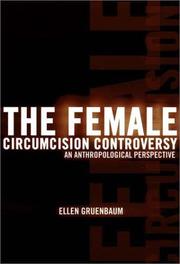
ISBN: 0812235738 0812217462 1336206063 0812292510 Year: 2001 Publisher: Philadelphia, Pa University of Pennsylvania Press
Abstract | Keywords | Export | Availability | Bookmark
 Loading...
Loading...Choose an application
- Reference Manager
- EndNote
- RefWorks (Direct export to RefWorks)
To the Western eye, there is something jarringly incongruous, even shocking, about the image of a six-year-old girl being held down by loving relatives so that her genitals can be cut. Yet two million girls experience this each year. Most Westerners, upon learning of the practice of female circumcision, have responded with outrage; those committed to improving the status of women have gone beyond outrage to action by creating various programs for "eradicating" the practice. But few understand the real life complexities families face in deciding whether to follow the traditional practices or to take the risk of change. In The Female Circumcision Controversy, Ellen Gruenbaum points out that Western outrage and Western efforts to stop genital mutilation often provoke a strong backlash from people in the countries where the practice is common. She looks at the validity of Western arguments against the practice. In doing so, she explores both outsider and insider perspectives on female circumcision, concentrating particularly on the complex attitudes of the individuals and groups who practice it and on indigenous efforts to end it. Gruenbaum finds that the criticisms of outsiders are frequently simplistic and fail to appreciate the diversity of cultural contexts, the complex meanings, and the conflicting responses to change. Drawing on over five years of fieldwork in Sudan, where the most severe forms of genital surgery are common, Gruenbaum shows that the practices of female circumcision are deeply embedded in Sudanese cultural traditions-in religious, moral, and aesthetic values, and in ideas about class, ethnicity, and gender. Her research illuminates both the resistance to and the acceptance of change. She shows that change is occurring as the result of economic and social developments, the influences of Islamic activists, the work of Sudanese health educators, and the efforts of educated African women. That does not mean that there is no role for outsiders, Gruenbaum asserts, and she offers suggestions for those who wish to help facilitate change. By presenting specific cultural contexts and human experiences with a deep knowledge of the tremendous variation of the practice and meaning of female circumcision, Gruenbaum provides an insightful analysis of the process of changing this complex, highly debated practice.
Female circumcision. --- Excision (Ethnologie) --- #SBIB:39A9 --- #SBIB:39A11 --- #SBIB:316.346H29 --- Medische antropologie / gezondheid / handicaps --- Antropologie : socio-politieke structuren en relaties --- Positie van de vrouw in de samenleving: andere topics --- Sociology of culture --- Physiology: reproduction & development. Ages of life --- Sexology --- Sociology of the family. Sociology of sexuality --- Development aid. Development cooperation --- Female circumcision --- Circumcision, Female --- Clitoridotomy --- Female genital cutting --- Female genital modification --- Female genital mutilation --- FGC (Female genital cutting) --- FGM (Female genital mutilation) --- Genital cutting, Female --- Genital mutilation, Female --- Mutilation, Female genital --- Body marking --- Clitoris --- Initiation rites --- Surgery --- Female genital mutilation. --- Anthropology. --- Folklore. --- Gender Studies. --- Linguistics. --- Women's Studies. --- Race --- Marriage --- Development policy --- Patriarchy --- Rituals --- Sexuality --- Book
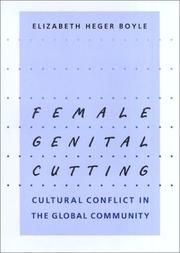
ISBN: 0801874734 9780801874734 9780801870637 0801870631 080188263X 9780801882630 Year: 2002 Publisher: Baltimore The Johns Hopkins University Press
Abstract | Keywords | Export | Availability | Bookmark
 Loading...
Loading...Choose an application
- Reference Manager
- EndNote
- RefWorks (Direct export to RefWorks)
She concludes that while globalization may exacerbate such conflicts, it can ultimately lead to social change.
Female circumcision --- World health. --- Global health --- International health --- Public health --- Medical geography --- Circumcision, Female --- Clitoridotomy --- Female genital cutting --- Female genital modification --- Female genital mutilation --- FGC (Female genital cutting) --- FGM (Female genital mutilation) --- Genital cutting, Female --- Genital mutilation, Female --- Mutilation, Female genital --- Body marking --- Clitoris --- Initiation rites --- Prevention. --- Government policy. --- Religious aspects. --- International cooperation --- Surgery --- World health --- vrouwenbesnijdenis --- Government policy --- Prevention --- Religious aspects --- excision (circoncision féminine) --- Excision (Ethnologie) --- Santé mondiale --- Prévention --- Politique gouvernementale --- Aspect religieux --- Social policy --- Human rights --- Physiology: reproduction & development. Ages of life --- International --- Book
Book
ISBN: 9780192633552 9780191896736 0192633562 0192633554 019189673X Year: 2022 Publisher: Oxford, England : Oxford University Press,
Abstract | Keywords | Export | Availability | Bookmark
 Loading...
Loading...Choose an application
- Reference Manager
- EndNote
- RefWorks (Direct export to RefWorks)
This is a qualitative study into the impact the criminalisation of female genital mutilation (FGM) has had on diaspora and stakeholder attitudes towards FGM in the UK. It contains survivors' testimonies and explores key themes that emerged from the well-publicised criminal trials in the UK and the barriers that prevent the law from working effectively.
Female circumcision --- Law and legislation --- Body marking --- Clitoris --- Initiation rites --- Circumcision, Female --- Clitoridotomy --- Female genital cutting --- Female genital modification --- Female genital mutilation --- FGC (Female genital cutting) --- FGM (Female genital mutilation) --- Genital cutting, Female --- Genital mutilation, Female --- Mutilation, Female genital --- Surgery --- Law and legislation. --- Clitoridectomy --- Medical laws and legislation --- Great Britain. --- Anglia --- Angliyah --- Briṭanyah --- England and Wales --- Förenade kungariket --- Grã-Bretanha --- Grande-Bretagne --- Grossbritannien --- Igirisu --- Iso-Britannia --- Marea Britanie --- Nagy-Britannia --- Prydain Fawr --- Royaume-Uni --- Saharātchaʻānāčhak --- Storbritannien --- United Kingdom --- United Kingdom of Great Britain and Ireland --- United Kingdom of Great Britain and Northern Ireland --- Velikobritanii͡ --- Wielka Brytania --- Yhdistynyt kuningaskunta --- Northern Ireland --- Scotland --- Wales
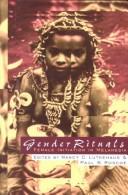
ISBN: 0415911079 0415911060 9780415911078 Year: 1995 Publisher: New York London Routledge
Abstract | Keywords | Export | Availability | Bookmark
 Loading...
Loading...Choose an application
- Reference Manager
- EndNote
- RefWorks (Direct export to RefWorks)
Female circumcision --- Initiation rites --- Puberty rites --- Women --- Circoncision féminine --- Rites d'initiation --- Rites de puberté --- Femmes --- Rites and ceremonies --- Social conditions --- Rites et cérémonies --- Conditions sociales --- #SBIB:39A10 --- #SBIB:39A76 --- Antropologie: religie, riten, magie, hekserij --- Etnografie: Oceanië --- Circoncision féminine --- Rites de puberté --- Rites et cérémonies --- Melanesia --- Papua New Guinea --- Initiation rites - Papua New Guinea. --- Puberty rites - Papua New Guinea. --- Female circumcision - Papua New Guinea. --- Women - Papua New Guinea - Rites and ceremonies. --- Women - Papua New Guinea - Social conditions. --- Human females --- Wimmin --- Woman --- Womon --- Womyn --- Females --- Human beings --- Femininity --- Sex customs --- Initiations --- Initiatory rites --- Circumcision, Female --- Clitoridotomy --- Female genital cutting --- Female genital modification --- Female genital mutilation --- FGC (Female genital cutting) --- FGM (Female genital mutilation) --- Genital cutting, Female --- Genital mutilation, Female --- Mutilation, Female genital --- Body marking --- Clitoris --- Surgery --- Initiation rites - Papua New Guinea --- Puberty rites - Papua New Guinea --- Female circumcision - Papua New Guinea --- Women - Papua New Guinea --- Women - Papua New Guinea - Social conditions
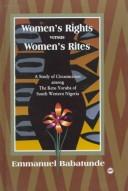
ISBN: 0865436258 0865436266 Year: 1998 Publisher: Lawrenceville Africa World Press
Abstract | Keywords | Export | Availability | Bookmark
 Loading...
Loading...Choose an application
- Reference Manager
- EndNote
- RefWorks (Direct export to RefWorks)
Female circumcision --- Sex role --- Women, Yoruba --- Excision (Ethnologie) --- Rôle selon le sexe --- Femmes yoruba --- Rites and ceremonies. --- Social conditions. --- Rites et cérémonies --- Conditions sociales --- Rôle selon le sexe --- Rites et cérémonies --- Sex differences --- Women, Yoruba (African people) --- Yoruba women --- Gender differences --- Sexual dimorphism in humans --- Sex differentiation --- Circumcision, Female --- Clitoridotomy --- Female genital cutting --- Female genital modification --- Female genital mutilation --- FGC (Female genital cutting) --- FGM (Female genital mutilation) --- Genital cutting, Female --- Genital mutilation, Female --- Mutilation, Female genital --- Body marking --- Clitoris --- Initiation rites --- Gender role --- Sex (Psychology) --- Sex differences (Psychology) --- Social role --- Gender expression --- Sexism --- Rites and ceremonies --- Social conditions --- Surgery --- Gender roles --- Gendered role --- Gendered roles --- Role, Gender --- Role, Gendered --- Role, Sex --- Roles, Gender --- Roles, Gendered --- Roles, Sex --- Sex roles

ISBN: 9782914968348 2914968345 Year: 2007 Publisher: Bellecombe-en-Bauges : Editions du Croquant,
Abstract | Keywords | Export | Availability | Bookmark
 Loading...
Loading...Choose an application
- Reference Manager
- EndNote
- RefWorks (Direct export to RefWorks)
Women --- Abused women --- Women refugees --- Femmes --- Femmes victimes de violence --- Réfugiées --- Social conditions --- Economic conditions --- Conditions sociales --- Conditions économiques --- Female circumcision --- Feminism --- Crimes against --- Abused women. --- Female circumcision. --- Women refugees. --- Feminism. --- Crimes against. --- BPB0801 --- 343.615-055.2 --- Vrouwenmishandeling --- 343.615-055.2 Vrouwenmishandeling --- Réfugiées --- Conditions économiques --- Crimes against women --- Femicide --- Women victims of crime --- Refugee women --- Refugees --- Emancipation of women --- Feminist movement --- Women's lib --- Women's liberation --- Women's liberation movement --- Women's movement --- Social movements --- Anti-feminism --- Circumcision, Female --- Clitoridotomy --- Female genital cutting --- Female genital modification --- Female genital mutilation --- FGC (Female genital cutting) --- FGM (Female genital mutilation) --- Genital cutting, Female --- Genital mutilation, Female --- Mutilation, Female genital --- Body marking --- Clitoris --- Initiation rites --- Battered women --- Victims of crimes --- Battered woman syndrome --- Emancipation --- Surgery --- Women - Crimes against --- Violence envers les femmes --- Droits de l'homme (droit international) --- Protection, assistance, etc. --- Droits --- 1990-....

ISBN: 0306461315 0585399379 Year: 1999 Publisher: New York (N.Y.) : Kluwer academic/Plenum,
Abstract | Keywords | Export | Availability | Bookmark
 Loading...
Loading...Choose an application
- Reference Manager
- EndNote
- RefWorks (Direct export to RefWorks)
Every year around the world 13.3 million boys and 2 million girls have part or all of their external sex organs cut off. Doctors, parents, and politicians have been misled into thinking that these mutilations are beneficial, necessary and harmless. International respected experts in the fields of medicine, science, politics, law, ethics, sociology, anthropology, history and religion present the latest research, documentation and analysis of this world-wide problem, focusing on the ethical, political and legal aspects of sexual mutilation; the cost and burden to healthcare systems; the latest medical research; anatomical and function consequences; religious and cultural aspects; psychological aspects; and the world-wide campaign to end sexual mutilation.
Circumcision --- Female circumcision --- Moral and ethical aspects --- Medicine. --- Religion. --- Culture --- Ethics. --- Pediatrics. --- Public international law. --- Medicine & Public Health. --- Religious Studies, general. --- Regional and Cultural Studies. --- Public International Law. --- Study and teaching. --- Culture-Study and teaching. --- Public International Law . --- Culture—Study and teaching. --- Law of nations --- Nations, Law of --- Public international law --- Law --- Religion, Primitive --- Atheism --- Irreligion --- Religions --- Theology --- Deontology --- Ethics, Primitive --- Ethology --- Moral philosophy --- Morality --- Morals --- Philosophy, Moral --- Science, Moral --- Philosophy --- Values --- Paediatrics --- Pediatric medicine --- Medicine --- Children --- Diseases --- Health and hygiene --- Amputation, Foreskin --- Foreskin amputation --- Foreskin removal --- Male circumcision --- Prepucectomy --- Removal of foreskin --- Body marking --- Foreskin --- Initiation rites --- Circumcision, Female --- Clitoridotomy --- Female genital cutting --- Female genital modification --- Female genital mutilation --- FGC (Female genital cutting) --- FGM (Female genital mutilation) --- Genital cutting, Female --- Genital mutilation, Female --- Mutilation, Female genital --- Clitoris --- Surgery
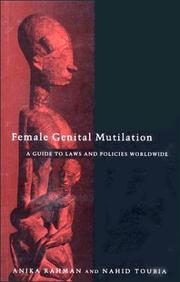
ISBN: 1856497739 1856497720 9781856497732 Year: 2000 Publisher: London Zed Books
Abstract | Keywords | Export | Availability | Bookmark
 Loading...
Loading...Choose an application
- Reference Manager
- EndNote
- RefWorks (Direct export to RefWorks)
#SBIB:39A11 --- #SBIB:39A9 --- #SBIB:316.346H29 --- Antropologie : socio-politieke structuren en relaties --- Medische antropologie / gezondheid / handicaps --- Positie van de vrouw in de samenleving: andere topics --- Mutilation --- Mutilations sexuelles --- Female circumcision --- Female circumcision. --- Physiology: reproduction & development. Ages of life --- International law --- Human rights --- Social policy --- Development aid. Development cooperation --- Women's rights. --- Law and legislation --- Criminal provisions. --- Women's rights --- Rights of women --- Women --- Circumcision, Female --- Clitoridotomy --- Female genital cutting --- Female genital modification --- Female genital mutilation --- FGC (Female genital cutting) --- FGM (Female genital mutilation) --- Genital cutting, Female --- Genital mutilation, Female --- Mutilation, Female genital --- Law and legislation&delete& --- Criminal provisions --- Civil rights --- Body marking --- Clitoris --- Initiation rites --- Legal status, laws, etc. --- Surgery --- Government policy --- Policy --- Book --- Non-governmental organizations
| Listing 1 - 10 of 14 | << page >> |
Sort by
|

 Search
Search Feedback
Feedback About UniCat
About UniCat  Help
Help News
News